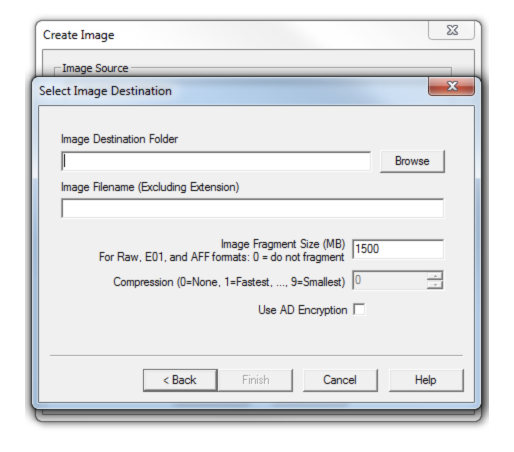

- #DATA RECOVERING WITH ACCESSDATA FTK IMAGER UPGRADE#
- #DATA RECOVERING WITH ACCESSDATA FTK IMAGER SOFTWARE#
- #DATA RECOVERING WITH ACCESSDATA FTK IMAGER FREE#
In this tutorial, we will create an exact replica of a local drive (Z:\ Georges Drive) that will be used in the scope of a digital forensic investigation.Ģ Tutorial Section LEARNING OBJECTIVES: Deploy the NEST Digital Forensics vapp Understand FTK Imager program Use FTK Imager to create a disk image Use automated hashing tools available in FTK Imager Understand what the md5 and sha1 hashes represent Part 1 Deploying the vapp 1.
#DATA RECOVERING WITH ACCESSDATA FTK IMAGER SOFTWARE#
This software can acquire images of locally available storage devices, such as USB, hard drives, CD drives, or even individual files.
#DATA RECOVERING WITH ACCESSDATA FTK IMAGER FREE#
However, the free version only allows for local imaging. FTK Imager is a software created by the company AccessData for the purpose of creating both local and remote images. In this particular tutorial, we will be making an image of a local hard drive using FTK Imager. There are various software that are specifically aimed towards one or the other. a computer in a suspect s office at their place of work). In the case of remote acquisition, the target storage device is not present (i.e. In the case that a disk image is taken locally, the data storage target is physically available, such as a USB key or hard drive on an acquired machine. In This Tutorial An image may be taken locally or remotely. In any investigation, analysis is not done on the original data storage device (target), but instead on the exact copy taken. Creating a disk image file of a target is the first step of any digital forensic investigation. If the file structure and its contents cannot be verified as being exactly the same as the original target drive, the integrity of the evidence is in jeopardy and could be inadmissible in a court of law. This differs from a normal backup in that the integrity of the exact storage structure remains intact, which is pivotal in maintaining the integrity of a forensic investigation. The disk image consists of the actual contents of the data storage device, as well as the information necessary to replicate the structure and content layout of the device. A disk Image is defined as a computer file that contains the contents and structure of a data storage device such as a hard drive, CD drive, phone, tablet, RAM, or USB. Additionally, it can be used to create an exact replica of a hard drive or other device (CD, USB, etc.) for the purpose of analysis during the course of an investigation.
#DATA RECOVERING WITH ACCESSDATA FTK IMAGER UPGRADE#
A disk image can be used in several instances, including: restoration of a hard drive s contents during disaster recovery, for the transfer of contents of a hard drive from one computer to another, or to restore the contents of a hard drive after hardware upgrade or repair. Disk Imaging Definition Disk images are used to transfer a hard drive s contents for various reasons.

The process of working on a digital forensics case include creating disk image (copies of the original suspect s drive), hashing or verifying the integrity of the disk image, write blocking the disk image (setting it to read-only to verify disk image integrity), and analyzing the drive and its contents. A large part of digital forensics is working on cases to process and analyze digital evidence collected from crime scenes. 1 Digital Forensics Tutorials Acquiring an Image with FTK Imager Explanation Section Digital Forensics Definition The use of scientifically derived and proven methods toward the preservation, collection, validation, identification, analysis, interpretation, documentation and presentation of digital evidence derived from digital sources for the purpose of facilitating or furthering the reconstruction of events found to be criminal, or helping to anticipate unauthorized actions shown to be disruptive to planned operations.


 0 kommentar(er)
0 kommentar(er)
